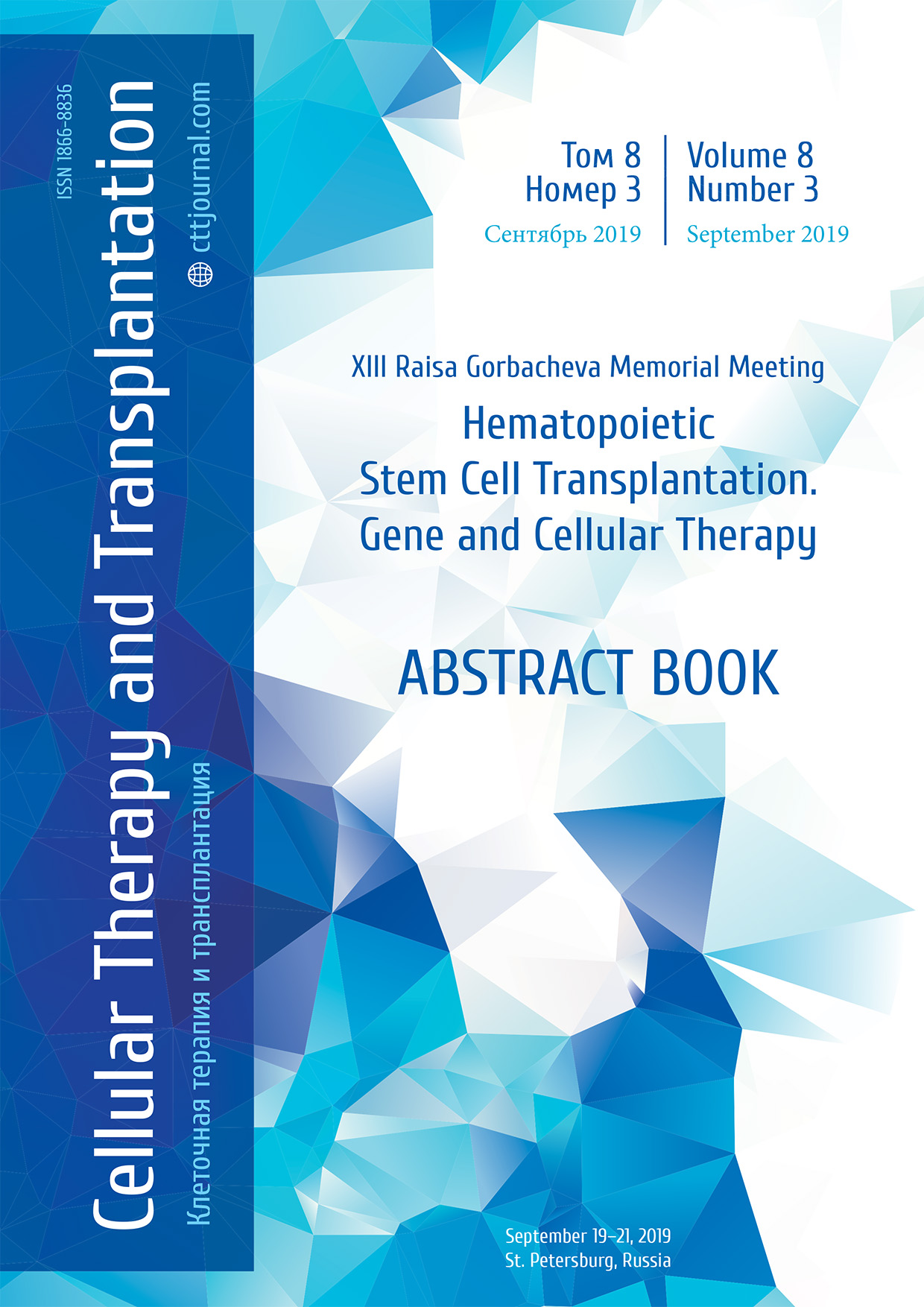Treatment of T-cell lymphomas: First Pavlov State Medical University of Saint Petersburg experience
Elena E. Lepik, Andrey V. Kozlov, Eugenia S. Borzenkova, Yury R. Zalyalov, Kirill V. Lepik, Elena V. Kondakova, Vadim V. Baykov, Ivan S. Moiseev, Tatiana V. Schneider, Natalia B. Mikhaylova, Boris V. Afanasyev
Raisa Gorbacheva Memorial Research Institute of Pediatric Oncology, Hematology and Transplantation, Pavlov First Saint Petersburg State Medical University, St. Petersburg, Russia
Contact: Dr. Elena E. Lepik
E-mail: ee.dav@mail.ru
Summary
T-cell lymphomas represent rare and heterogeneous group of aggressive non-Hodgkin lymphomas. Almost 70% of patients undergoing first-line therapy develop a relapse or refractory disease. There are currently no standards for the treatment of relapsed/refractory T-cell lymphomas (r/r TCL). A number of novel therapy approaches are aimed for improvement of outcomes in patients with r/r TCL. This report summarizes the First I. Pavlov State Medical University experience in the treatment of patients with T-cell lymphomas.
Patients and methods
We analyzed data of 42 patients with TCL eligible for stem cells transplantation treated in First Saint-Petersburg state medical University from 2005 to 2019. Among them n=10 with anaplastic large cell lymphoma (ALK+), n=3 with anaplastic large cell lymphoma (ALK-), n=4 with angioimmunoblastic T-cell lymphoma, n=4 with hepatosplenic T-cell lymphoma, n=1 with γδ-T cell lymphoma, n=17 with PTCL not otherwise specified (PTCL-NOS), n=1 with mycosis fungoides (MF), n=1 with primary cutaneous CD4+ T-cell lymphoma and n=1 with subcutaneous panniculitis-like T-cell lymphoma (SPTCL). The median age was 43 years (range 1 – 72 years).
Median time from initial diagnosis to relapse or progression after primary therapy was 1.3 months (0-61.6). Among them, 23 patients (55%) had a primary chemoresistant disease, while other patients (n=18, 43%) had a relapse after initial treatment. The treatment was tailored according to biological factors presented in patients. In eight patients with CD30+ PTCL, brentuximab vedotine was used. One patient with ALK+ anaplastic lymphoma received ALK inhibitor crizotinib. In three patients with PD-L1 hyperexpression, nivolumab treatment was applied. The responses were consolidated with hematopoietic stem cells transplantation (HSCT). Overall 23 patients underwent SCT: high-dose chemotherapy with autologous hematopoietic SCT was performed in 16 patients, 12 patients were subject to allogeneic SCT (among them, 5 patients with relapses after auto-SCT).
Results
At the time of analysis, 32 patients remained alive. The median follow-up of surviving patients was 38 months (7-124 mo). The median overall survival was not reached, and the 3-year survival rate was 68%. The disease status at the last follow-up was complete remission (CR) in 11 patients, partial response in 3 patients, and disease progression in 21 cases. Among different factors, lower ECOG performance status at the time of diagnosis was significantly associated with adverse prognosis (p=0.05). Patients that had undergo salvage SCT showed significantly better disease status at the moment of last follow-up: 15/18 (83%) were in CR, versus 3/14 (21%) in the patients who did not undergo SCT. Progression-free survival rate was 43% for the patients with T-cell lymphoma after salvage SCT.
Conclusions
The results of analysis show that introduction of novel agents and consolidation with high-dose chemotherapy and autologous stem cells transplantation, or allogeneic stem cells transplantation in selected cases, may improve outcomes in patients with relapsed and refractory T-cell lymphomas. Brentuximab vedotine-based regimens may be successfully used as a bridge therapy before stem cells transplantation.
Keywords
T-cell lymphoma, autologous hematopoietic stem cells transplantation, allogeneic hematopoietic stem cells transplantation, Brentuximab vedotine.


